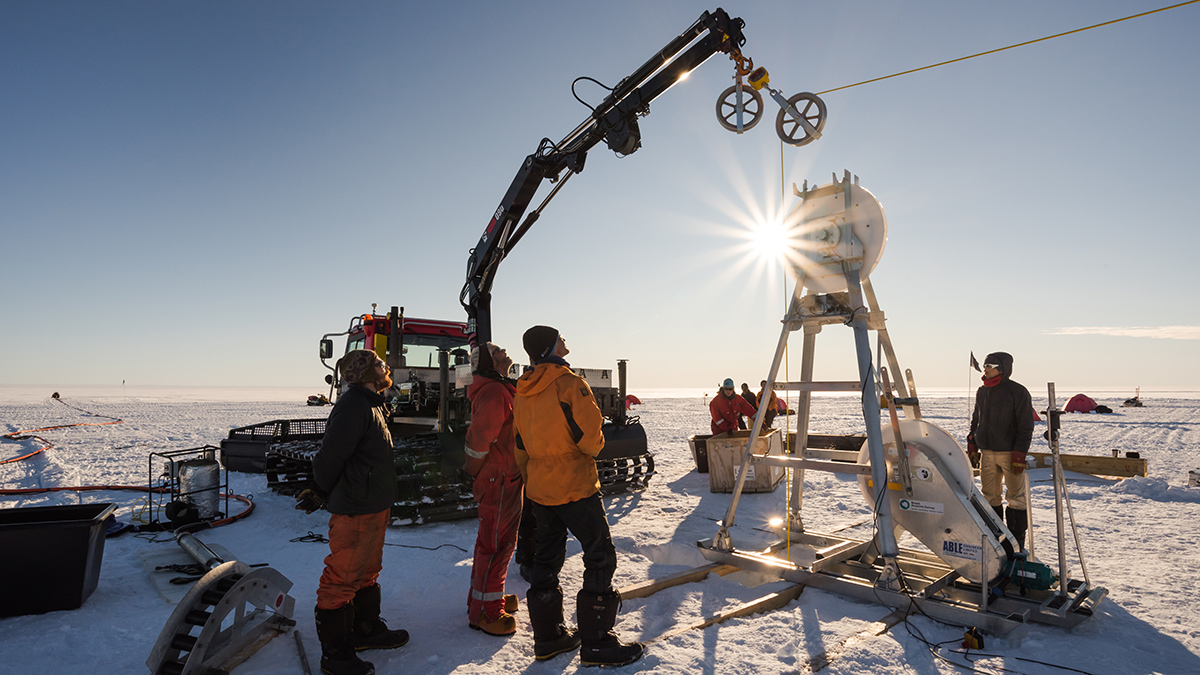Source: Journal of Geophysical Research: Oceans
Antarctic ice is melting. But exactly which forces are causing it to melt and how melting will influence sea level rise are areas of active research. Understanding the decay of ice shelves, which extend off the edges of the continent, is particularly pressing because these shelves act as barriers between ocean water and land. Without ice shelves, the continent’s glaciers would flow freely into the ocean, hastening sea level rise.
In January 2015, a group of researchers used hot water to drill a hole through 740 meters of the Ronne Ice Shelf. They then lowered a mooring carrying temperature, salinity, and current sensors through the hole into the ocean below. A radio echo sounder deployed 15 meters from the mooring kept tabs on ice thickness. For the next 3 years, the instruments took measurements every 2 hours; these measurements were sent to a solar-powered data logger on the surface and then on to researchers via satellite.
Anselin et al. recently used these measurements to probe the forces responsible for melting ice shelves.
The tide is a major force contributing to ice shelf melting, the researchers found. As the tide rises, the water rushes across the bottom of the shelf. Friction between the shelf and the water causes the current just beneath the ice to slow. This slowdown leads to strong mixing within the ocean, and this mixing brings heat to the ice base, driving high melt rates. Because the strength of tides varies depending on the positions of the Sun and the Moon relative to Earth, ice shelf melting has a cyclical pattern, with melting ebbing and flowing every 2 weeks.
However, current models of melt rates fail to capture the full extent to which tidal mixing and warm ocean water combine to melt ice. When analyzing data from additional sites, scientists should focus on how the interaction between tides and ice shelves leads to melting, the researchers say. (Journal of Geophysical Research: Oceans, https://doi.org/10.1029/2025JC022524, 2025)
—Saima May Sidik (@saimamay.bsky.social), Science Writer


